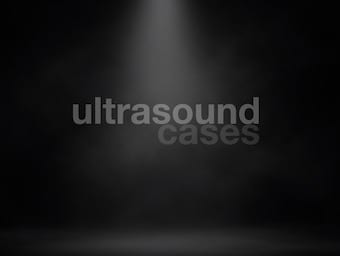
Ultrasound Case 064
A 15 year old boy has had vomiting and diarrhoea for 2 days. He has developed increasing right iliac fossa pain which has suddenly increased and is colicky in nature.

A 15 year old boy has had vomiting and diarrhoea for 2 days. He has developed increasing right iliac fossa pain which has suddenly increased and is colicky in nature.

An 18 year old man returns from a back packing trip. He has developed generalized abdominal pain, fever and vomited a couple of times. The junior doctor is concerned he has appendicitis and asks you to perform an ultrasound.

A 69 year old alcoholic patient presents with severe epigastric pain radiating through to his back. You are asked to exclude an abdominal aortic aneurysm and take a look with ultrasound.

A 22 year old man presents with abdominal pain and diarrhoea. He has 3 months of intermittent diarrhoea sometimes with blood, accompanied with weight loss and abdominal discomfort.

An 80 year old woman arrests in your department. She had presented an hour earlier with back pain. You start to prepare for a subcostal view of the heart and this is what you see.

A 76 year old man has renal colic. You look at his aorta.

A thin 17 year old male presents with right iliac fossa pain. He has had a recent viral illness and you wonder whether this is mesenteric adenitis.

A 71 year old man presents with severe back pain and hypotension. You suspect abdominal aortic aneurysm (AAA).

A 68 year old man is brought in by ambulance with severe lower back and lower limb pain and paralysis. Clinically he has lower limb ischaemia and you wonder about aortic dissection as the cause.

84 year old chap with ?renal colic deteriorates. On review you find his pain has worsened and he is pale, sweaty and hypotensive. Is this a vagal response to pain, a reaction to his analgesia or something else? You scan his aorta.

A 78 year old woman has a pulsatile mass in her mid abdomen. You wonder whether it is an abdominal aortic aneurysm.

An echo reveals a dilated and poorly functioning right ventricle with RV wall thickness of 6mm (≤5mm). You wonder whether this is a massive pulmonary embolism or just the changes of chronic pulmonary hypertension.